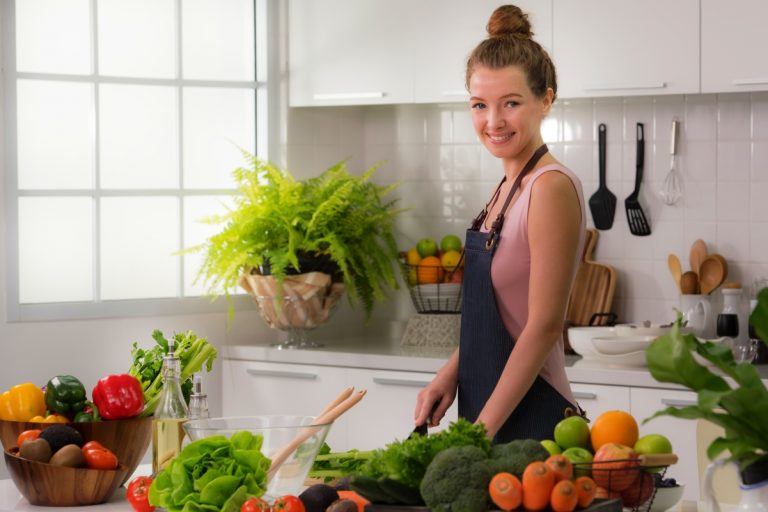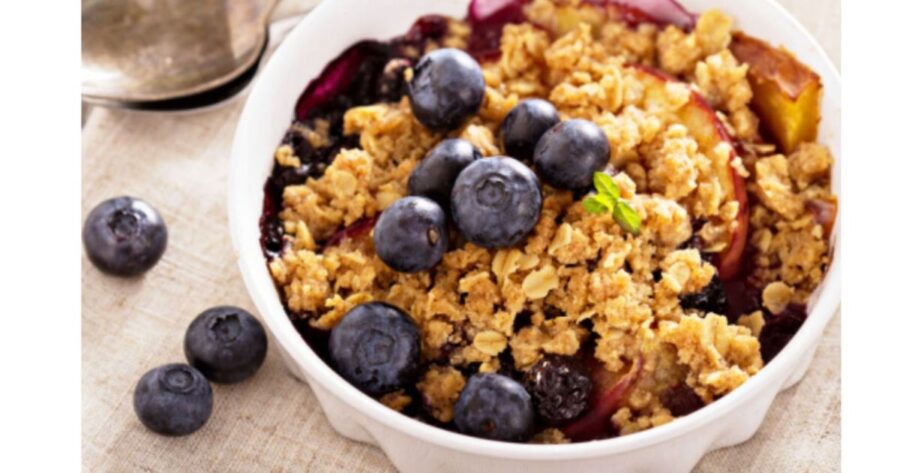We hear about inflammation often but do we really know what it is? Inflammation is an important immune system function. When it is out of control, it can cause serious damage. Inflammation has been linked to major diseases such as Alzheimer’s, arthritis, cancer, diabetes, heart disease, and signs of aging.

Inflammation is an essential function of your body’s immune response, but even a little too much inflammation can cause health problems.
How Does Inflammation Work In the Body?
Whatever the source of inflammation, the body’s response is similar. It is a process that the immune system recognizes and it helps remove harmful stimuli to help the body heal. Sometimes we get too much inflammation which is not good for the body.
Sometimes we need to turn up the body’s immune system so that it can fight all these intruders and other times we need to turn it off to let the body heal.
For example: When you cut yourself the body automatically increases blood flow to the area and sends in (among other things) killer white blood cells to surround any invading bacteria and burn the bacteria up with oxidative chemicals. It is like a protective army destroying invaders. This is called acute inflammation–an amazing process that protects us.
Unfortunately, we have so many stressors in our lives that this “war” ends up going on forever. In any war there is collateral damage and, in this case, some of that collateral damage is to healthy tissue
Sometimes, the body just doesn’t know when to stop producing inflammation.
It loses its ability to distinguish between the good guys and the invading bacteria or viruses. It ends up attacking the healthy tissues and upsetting delicate chemical and hormonal balances that keep all our systems running properly. This is just one process where long term or chronic inflammation is involved.
You don’t have to have pain or swelling in your body to have too much inflammation. Inflammation is the body’s response to injury and stress, hurdles many of us deal with on a day-to-day basis.
Inflammation Can Be Causative Factor In Many Major Diseases
Research has linked inflammation to all major debilitating conditions, including:
- Alzheimer’s: Evidence suggests that neuroinflammation, created by the brain’s own immune system, contributes to AD neuropathology and increases the course of Alzheimer’s.
- Arthritis: “Inflammation which involves swelling redness and

Lady in Pain with Arthritis heat is one of the immune system’s responses in several types of arthritis. Studies have found that high levels of a group of chemicals called prostaglandins result in inflammation.”
- Heart Disease: Study Links Plaque In Heart Disease To Inflammation
- Cancer can cause inflammation
- Signs of aging: Researchers can’t be sure if inflammation causes aging or aging causes inflammation or both, but they are sure that the two are linked.
- Diabetes: Research shows inflammation causes insulin resistance and insulin resistance causes more inflation to create a vicious cycle.
- Crones Disease is a type of inflammatory bowel disease.
- Obesity: Fat cells produce chemistry that creates inflammation.
Where Does Inflammation Come From?
The stress that causes this inflammation can come from a number of sources. These include:
- Physical stress. (Bruising or straining a muscle, burns, and frostbite.)
- Chronic low grade bacterial, viral and fungal infections.
- Chronic low-level food allergies or food sensitivities.
- Emotional stress – which raises cortisol levels. (Cortisol increases inflammation)
- A toxic environment: metals and other contaminants in the water and air.
- Toxicity in our diet: too much fat, sugar, protein, and alcohol.
What Does It Feel Like To Have Too Much Inflammation
It can be painful and cause stiffness and be very uncomfortable. It can be a constant throbbing or stabbing pain. The inflammation will cause pain as the swelling pushes against the sensitive nerves sending pain signals to the brain.
How to Reduce Inflammation
The start of reducing inflammation is reducing stress. Since this stress can come from a number of sources (as described above) there are many ways to do this.
- Maintain Proper Weight: In a study published in Cancer

Overweight Woman Research with postmenopausal women that were overweight or obese and lost 5% of their body weight, it was found that they had a good reduction in inflammation.
“This study adds to the growing understanding we have about the link between obesity and cancer, and it appears we can affect inflammation directly through nonpharmaceutical means.” said McTiernan. – Medical News Today - Get Enough Sleep: Lack of sleep can cause inflammation according to research done by the Department of Neurology, Beth Israel Deaconess Medical Center and Harvard Medical School.
- Just 20 Minutes of Exercise reduces inflammation according to a 2016 study at the University of California. “Our study found one session of about 20 minutes of moderate treadmill exercise resulted in a 5 percent decrease in the number of stimulated immune cells producing TNF,” says Hong. So low-intensity or mild-intensity workouts are very helpful.
- Avoiding or removing certain foods from your diet. These include too much sugar, fat, protein, alcohol and any food you may be allergic or sensitive to.
-
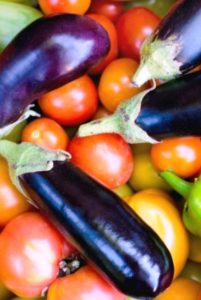
A Few Night Shade Vegetables Eliminating the nightshade vegetables can be helpful for many people as they have natural chemical compounds that promote inflammation and other negative health effects. It is not the same for all people as some people are unaffected by eating these vegetables. If someone already has an inflammatory condition, consuming nightshades may make the condition worse. A 20-year study by Childers was made on the connection between nightshades and arthritis, found that 74 to 90 percent of people who ached, regardless of their diagnosis, were sensitive to nightshades. Nightshades To Avoid:
- Potatoes, all varieties (sweet potatoes and yams are NOT nightshades)
- All Types of Peppers (red, green, yellow, orange, jalapeno, chili, cayenne)
- Tomatoes, all varieties
- Paprika
- Eggplant
- Adding Natural Anti-Inflammatory Foods to your meals is a very good way to get reduce inflammation. See the list below.
There’s good news: many foods are naturally anti-inflammatory. Antioxidants found in foods protect your cells from the effects of free radicals and can help reduce an overabundance of inflammation in your body.
12 Natural Anti-Inflammatory Foods
- Ginger: Ginger helps reduce inflammation and control blood sugar. Ginger tea is a great addition to any diet. A
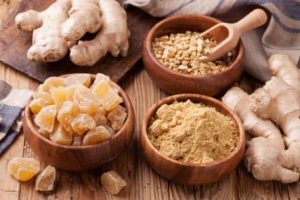
Ginger has been found to have many nutritional and medicinal benefits. study published in the National Library of Medicine compared ginger extract to common pain killers and found ginger to be very effective in reducing pain.
- Beets with their wonderful red color, are a powerful antioxidant and anti-inflammatory. Beets can boost your energy and lower your blood pressure.
- Broccoli is loaded with detoxifying antioxidants. Broccoli is a particularly rich source of kaempferol and isothiocyanates, both anti-inflammatory phytonutrients
- Spinach is one of the highest nutrient-dense foods. It contains a unique mixture of phytonutrients, is high in antioxidants and anti-inflammatory components which help protect against cellular damage.
- Flaxseed oil has a balance of omega 3 and 6 fatty acids. The omega 3 fatty acids reduce inflammation. Research studies show lignans can slow the growth of prostate cancer cells
- Green Tea contains many anti-inflammatory flavonoids. A 2002 study found the most abundant catechin of green tea (epigallocatechin-3-gallate) to be a potent anti-inflammatory compound with therapeutic potential.
- Onions contain quercetin, a potent antioxidant that can help your body fight inflammation.
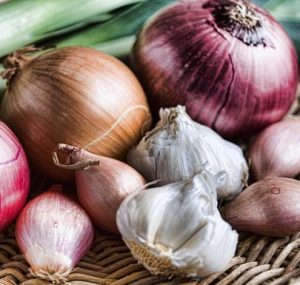
Onions stimulate the respiratory tract and help to expel sputum (phlegm). - Garlic can help reduce inflammation. At Washington State University they found garlic to be 100 times more effective than two antibiotics at fighting the Campylobacter bacterium — one of the causes of intestinal illness.
- Extra Virgin Olive Oil helps fight inflammation. Olive oil is full of polyphenols which protect the heart and blood vessels from inflammation.
“We identified 98 differentially expressed genes when comparing the intake of phenol-rich olive oil with low-phenol olive oil. Several of the repressed genes are known to be involved in pro-inflammatory processes, suggesting that the diet can switch the activity of immune system cells to a less deleterious inflammatory profile, as seen in metabolic syndrome. These findings strengthen the relationship between inflammation, obesity and diet and provide evidence at the most basic level of healthy effects derived from virgin olive oil consumption in humans.” Perez-Jimenez said in a statement to the press. - Blueberries have been found to reduce inflammation. It is best to eat organic berries since pesticides on berries are hard to wash away due to their size.
- Seaweed contains a complex carbohydrate called fucoidan that studies have shown to reduce inflammation
- Turmeric has anti-inflammatory properties and has been shown to be more effective than anti-inflammatory drugs.
To learn more about these twelve foods go to 12 Top Anti-Inflammatory Foods
In fact, most of the foods and recipes that we deal with at Real Food For Life help to reduce inflammation.
Here is a very good meal for you that is filled with anti-inflammatory foods.
Easy Natural Anti-inflammatory Meal For You Tonight
Want to get lots of anti-inflammatory foods into your diet? This one meal has all of the 12 Top Anti-Inflammatory Foods in it. It’s also extremely high in anti-oxidants. Enjoy this meal tonight.
Powerful Anti-Inflammatory Salad
This is a very nutritious salad with 3 of the 12 Top Anti-Inflammatory Foods. It is an easy salad to make and eat all of it in one sitting. Put it in a big bowl and just eat it. I do that all of the time.
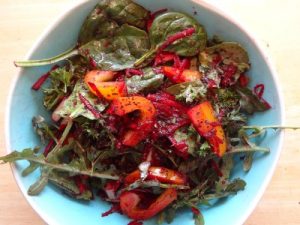
Ingredients:
2 handfuls, Spinach
1 handful, Arugula
1 handful of Parsley, chopped
1 Celery Stick, chopped
1 Beet, grated
1/2 medium Yellow Pepper, sliced*
1 Tbsp Dulse Seaweed Flakes
Directions:
1. Mix the greens together in a bowl.
2. Mix in the celery, yellow pepper, and grated beet.
3. Sprinkle with seaweed.
4. Serve this salad with my Powerful Anti-Inflammatory Salad Dressing.
*If you are someone who should not be eating a nightshade food, leave out the bell pepper.
Alkaline Nutritional Tip: Did you know that Spinach, Celery, Parsley, Arugula, Bell pepper, and Beets are all alkaline-forming.
Anti-Inflammatory Salad Dressing
Ingredients
- 1/2 cup olive oil
- 1/2 cup flax oil
- 1/3 cup lemon juice
- 1-3 cloves garlic minced
- 2-4 drops light liquid stevia
- 1/2 tsp Himalayan salt
Instructions
- Mince the garlic.
- Blend all of the above ingredients in a Blender.
- Taste and add more of any of the ingredients to your taste.
- Pour this salad dressing on the Powerful Anti-Inflammatory Salad with it's 4 anti-inflammatory foods and you will be eating 8 anti-inflammatory foods in one meal.
Notes
Have you heard of the olive oil fraud? Find out Which Olive Oil to Buy.
Powerful Anti-Inflammatory Vegetable Stew
This is a very nutritious stew and it has 4 of the 12 Top Anti-Inflammatory Foods! It is a tasty and easy stew to make.
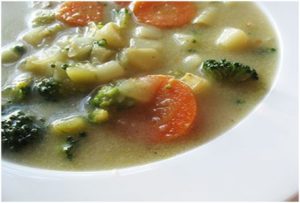
Ingredients:
1 bunch Broccoli
1 cup shredded Cabbage
1 large Onion
2 large Carrots
2 Tbsp Coconut Oil
2 tsp fresh Ginger, grated
1 tsp Cumin
1 tsp Turmeric
1 tsp Himalayan salt
Black Pepper to taste
1 – 2 cups Water
Directions:
1. Remove the skins from the onions, then chop them fine.
2. Sauté the onion in coconut oil till golden brown in a large saucepan.
3. Add the spices, sauté the spices for a minute, stirring constantly.
4. Add 1 cup of water and cook for 10 minutes to make a flavourful stock.
5. Chop the broccoli into 1 inch pieces and the carrots into slices.
6. Pour the stock into a saucepan.
7. Place all vegetables into a saucepan.
8. Add just enough water to half cover the vegetable.
9. Cover with lid and cook for 10 to 15 minutes till almost tender, stirring occasionally.
10. Don’t overcook the vegetables till they’re mushy; it will taste better if there is a slight crunch to the vegetables.
11. Enjoy.
Blueberry Crumble
Ingredients
Blueberry Base
- 1-2 apples
- 2 cups blueberries
- light liquid stevia
Crumble Topping
- 1 1/2 cups brown rice flour
- 1 cup rolled oats
- 1 tsp salt
- 1/3 cup almond or coconut oil
- 1/4 cup rice syrup
- 1/4 tsp light liquid stevia
Instructions
Crumble Base
- Core and slice the apples.
- Simmer the apples with a few spoons of water in a covered pot.
- Mix in the berries and simmer a few minutes.
- Sweeten to taste with stevia.
- Place the berry/apple mixture in a baking dish
Crumble Topping
- Mix the dry ingredients together in a bowl.
- In a separate bowl mix oil, stevia and rice syrup together and add to the dry ingredients.
- Mix thoroughly.
- Sprinkle evenly on top of the fruit
- Bake at 350º F. in the oven for approximately 40 minutes.
- Remove from the oven and let cool.
- Now enjoy your home-made blueberry crumble.
Notes
Here is another crumble recipe that is very tasty: Wild Blueberry Grain-Free Crumble is Tasty and Good for You
Follow the Blueberry Crumble with Green Tea.
Eating this whole meal you have consumed all the 12 Top Anti-Inflammatory Foods thus helping reduce inflammation in your body.
